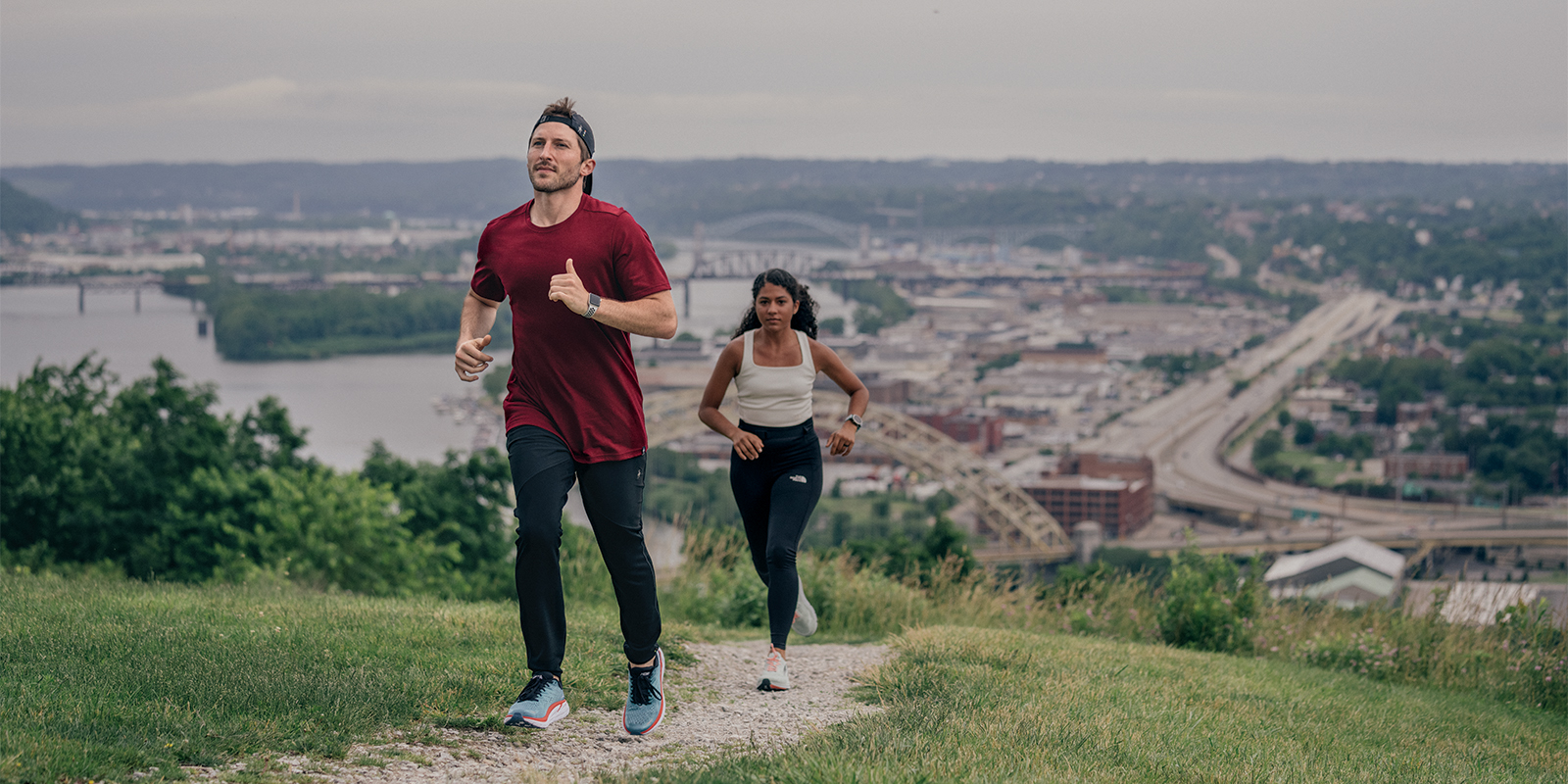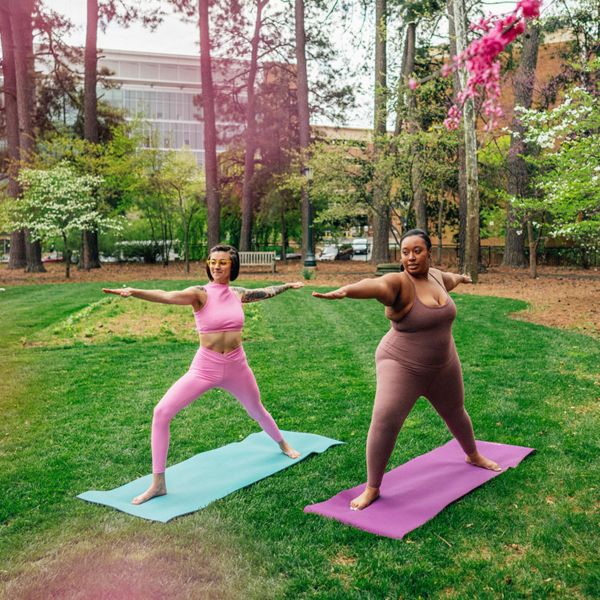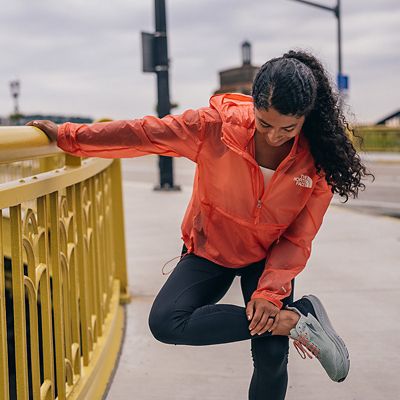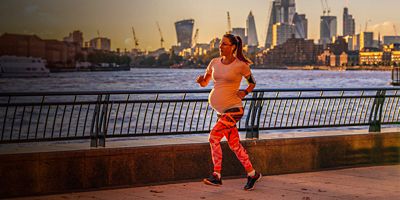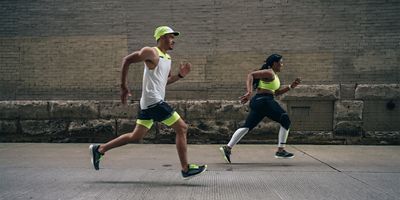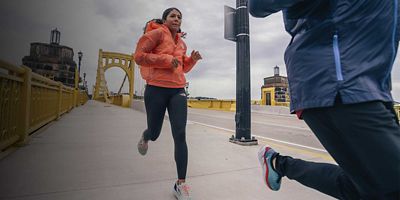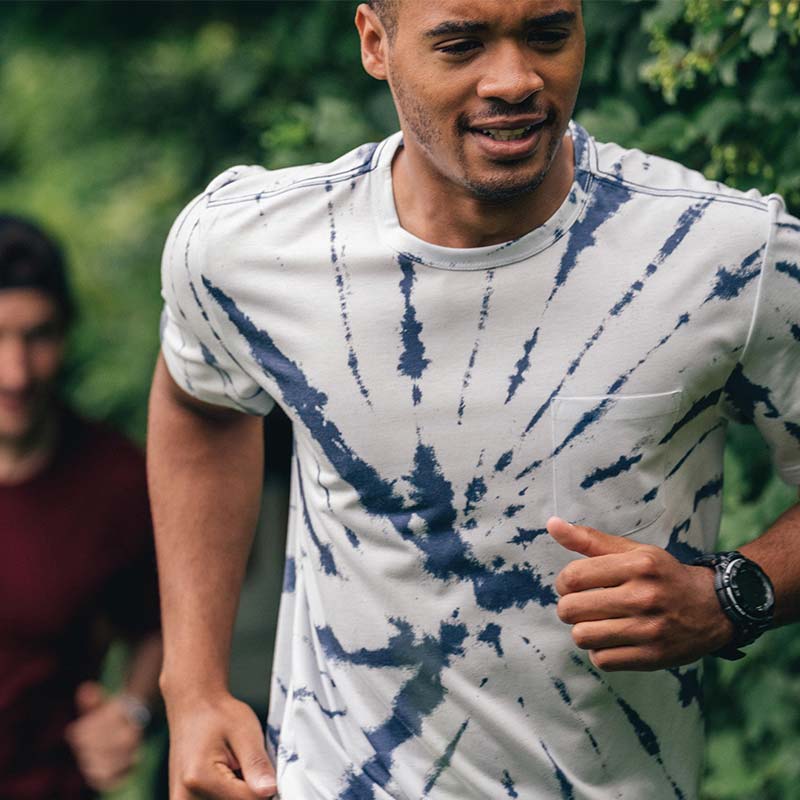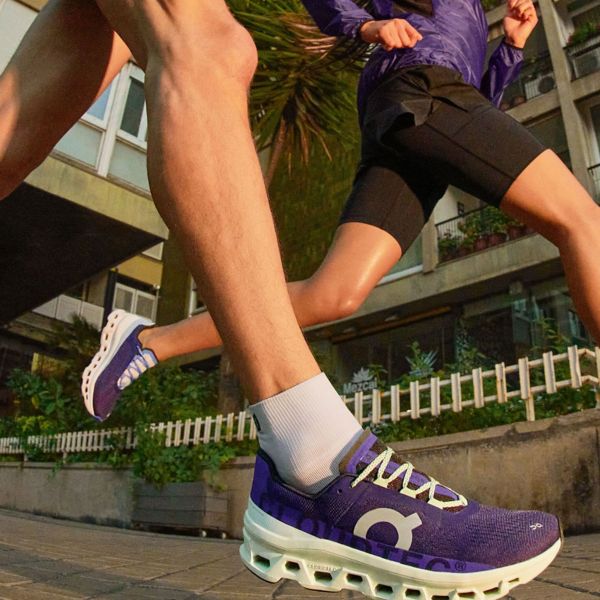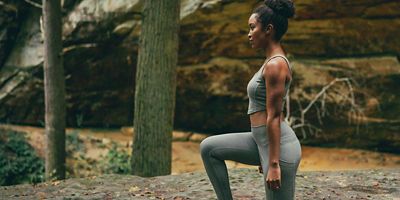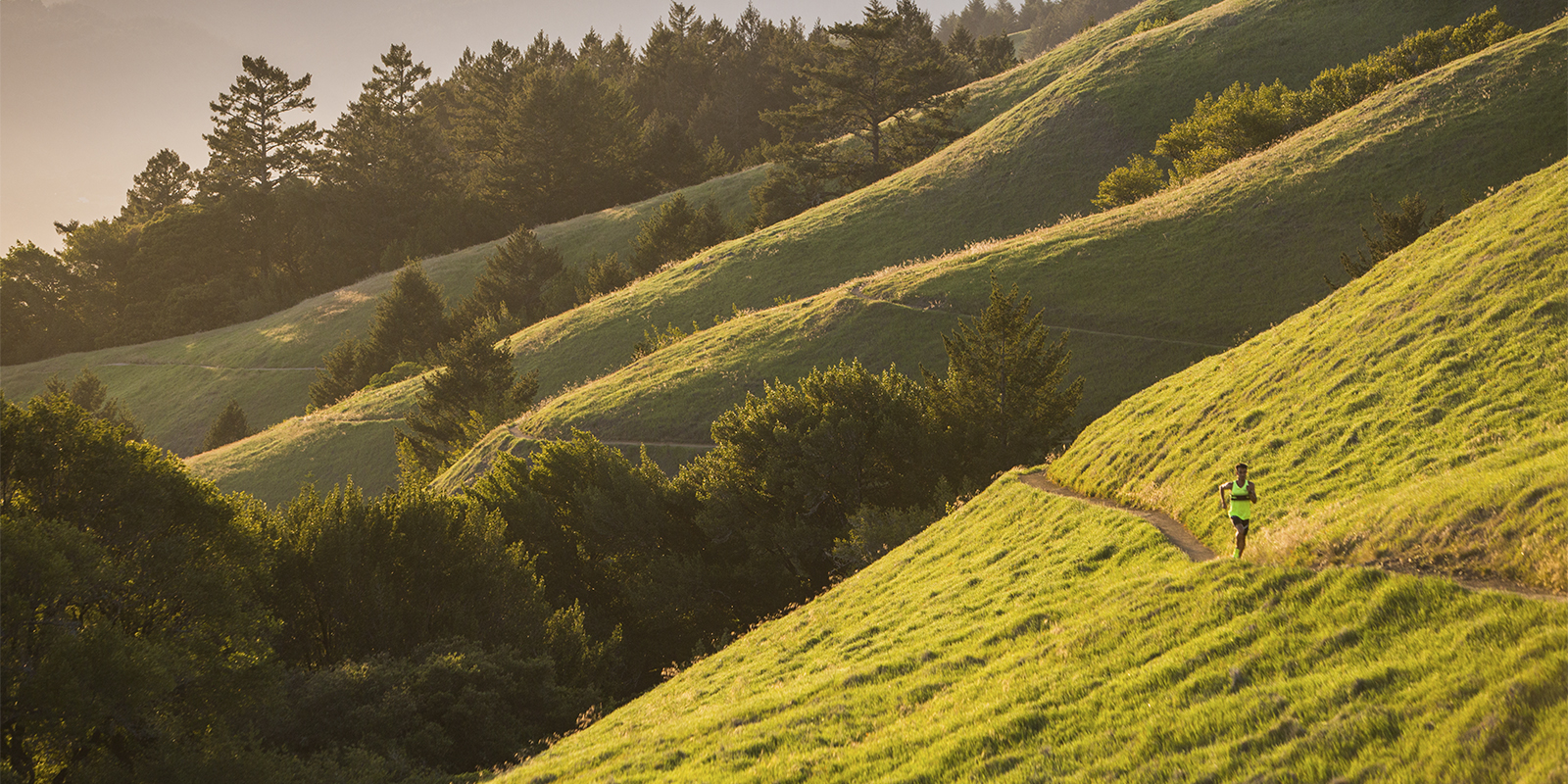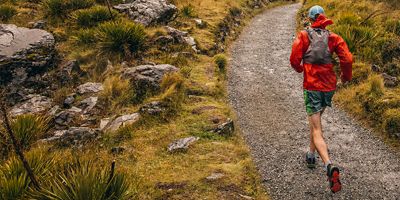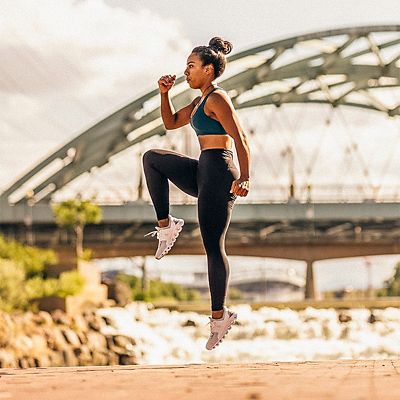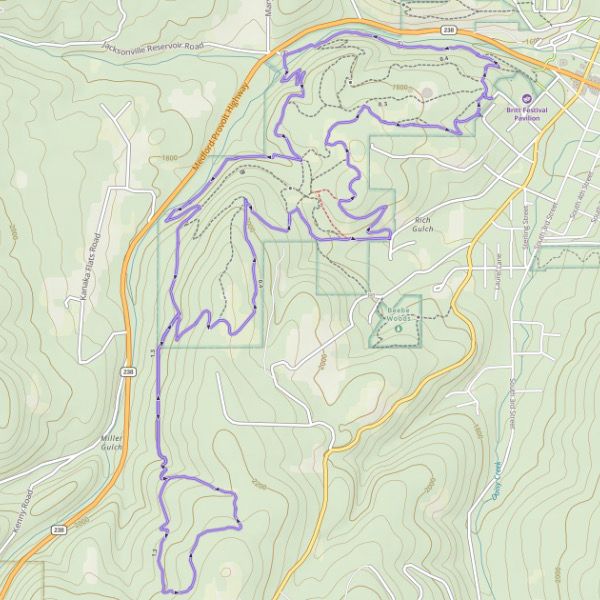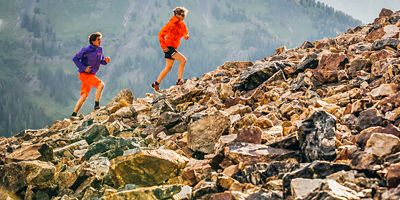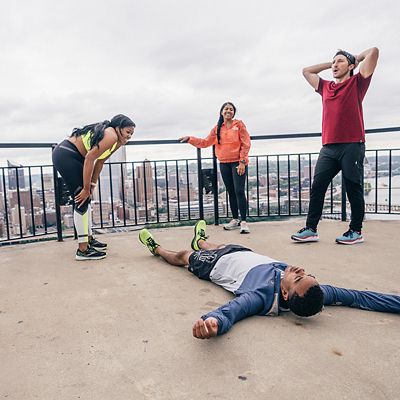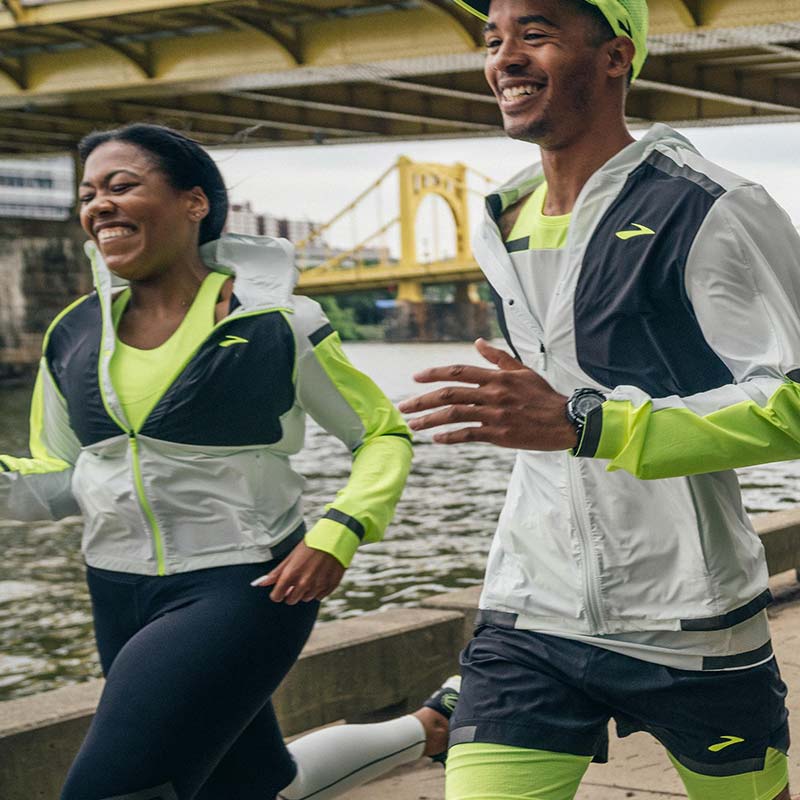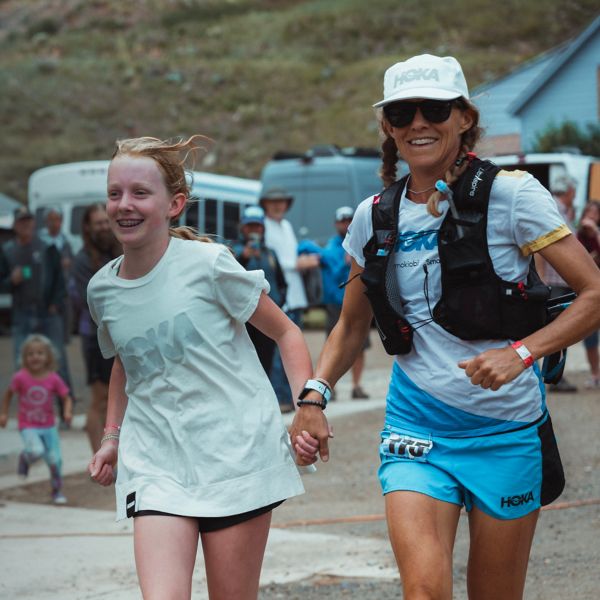Let’s be honest: On short runs in fair weather, you can run in just about anything. But if you plan to run more than a couple miles, and run in every season, the right apparel increases your comfort—and safety.
Materials 101
Materials used in running-specific apparel aim to keep you dry and comfortable, both from your own sweat and from the elements. Some materials offer more durability than, say, yoga-specific clothing. Some materials aim to ward off odor for days on end. And some recycled (and recyclable) materials actually help protect the environment. All fabrics fall into one of two categories: natural and synthetic, each with its pros and cons.
Synthetic
Baselayers, shirts, and pants in this category are typically made from nylon or polyester (nylon is more durable, while polyester is more breathable), often with some spandex for extra stretch. These materials are excellent at wicking sweat away from your skin and dry quickly. They’re also more durable than natural materials, and usually more affordable. On the downside, they’re made from petroleum. But more and more brands are using partially or completely recycled synthetic fibers. Synthetics also tend to get stinky quickly, but antimicrobial treatments are often applied to help keep garments fresh a little longer.
Natural
Merino wool is the most common fabric used in natural baselayers and shirts (bamboo, Tencel, and rayon fall under this category, too). Merino is comfortable (itchy wool is a relic of the past), great at regulating temperature, good at wicking, and naturally resists odors. But it wears down faster than synthetics, dries more slowly, and usually costs more. Some of the top-performing baselayers today are made with a blend of synthetic and merino fabrics, delivering the best of both worlds.
TOPS
Do you expect full sun, full shade, or some combination of the two? Will you be climbing to higher elevations and cooler temperatures? Consider the conditions and forecast and then choose from these layers.
- Tank: In hot weather, airy tank-style tops made of technical fabrics will keep you coolest (though you’ll need sunscreen on your shoulders and upper arms). Tanks add versatility when layered under long- or even short-sleeved tees for variable conditions.
- Tee: The most versatile top is a T-shirt made of technical fabric. They crossover to all four seasons and offer more sun protection than tanks.
- Long-sleeve: Long-sleeve shirts are a staple for runners who are out all year long. Wear them alone on cool days, under midlayers or jackets on cold days, and over tanks or tees on variable days.






